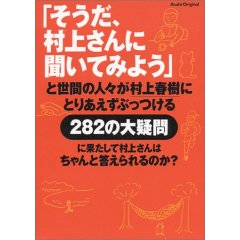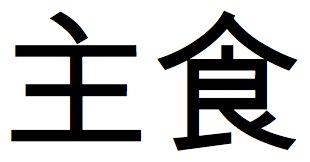With the goal of stirring up even more interest in Murakami between now and mid-October, when the Nobel Prizes are announced, I will post a small piece of unpublished Murakami translation once a week from now until the announcement. You can see the other entries in this series here: 1, 2.
It’s no secret that my favorite of Murakami’s novels is Hard-boiled Wonderland and the End of the World. I’ve also made it pretty clear that Dead Heat on a Merry-go-round is my favorite short-story collection and, in my opinion, the turning point of his early career. I found Hard-boiled in a small New Orleans bookstore called Beaucoup Books in the summer of 1999. Sadly it closed after Katrina. Dead Heat I bought at a used bookstore near Waseda University at some point in 2003. I took it with me on a month-long trip to Southeast Asia in February 2004, determined to spend my free time reading Japanese if I was going to be traveling outside of Japan. It was the first Japanese book I ever slogged through. I enjoyed it so much that I decided to spend the next year writing my senior thesis about it.
As I started to research the collection, it came as a surprise to discover that both Hard-boiled and Dead Heat were published in 1985; Hard-boiled in June and Dead Heat in October. Murakami actually serialized the Dead Heat stories under the title “A View of the Town” from ’83 to ’84, but a year later he added the story “Lederhosen” along with a substantial introduction for the hardback collected edition. The central image of the introduction is the dead heat on a merry-go-round: life never gets us anywhere – life in modern society is strange, and man is helpless for the most part. At least that’s the way Murakami claimed to feel after recounting the allegedly true (and later admittedly fictional) stories in the collection. The best we can hope for is to share our own strange stories with each other and develop a sense of empathy.
I dug it. Still do. So you can imagine how excited I was when on March 6th 2005, at the height of thesis madness, I discovered this passage from Alfred Birnbaum’s translation of Hard-boiled that links the two works:
She rolled down her panty hose as a bluesy Ray Charles came on with Georgia on My Mind. I closed my eyes, put both feet up on the table and swizzled the minutes around in my head like the ice in a drink. Everything, everything seemed once-upon-a-time. The clothes on the floor, the music, the conversation. Round and round it goes, and where it stops everyone knows. Like a dead heat on the merry-go-round. No one pulls ahead, no one gets left behind. You always get to the same spot.
“It seems so long ago,” I said, my eyes still shut.
“Of course, silly,” she said mysteriously, taking the glass from my hand and undoing the buttons of my shirt. Slowly, deliberately, as if stringing green beans.
“How’d you know?”
“I just know,” she said. She put her lips to my bare chest. Her long hair swept over my stomach. Eyes closed, I gave my body over to sensation. I thought about the suzuki, I though about the nail clippers, I thought about the snail on the cleaners’ front stoop. I opened my eyes and drew her to me, reaching around behind to undo the hook of her brassiere. There was no hook.
“Up front,” she prompted.
Things do evolve after all. (364)
Whoa, I thought. There’s the “dead heat” image, right there on page 364. I quickly busted out my Japanese copy to see what exactly was going on:
彼女がパンティー・ストッキングをくるくると丸めるように脱いでいるところで曲はレイ・チャールスの『ジョージア・オン・マイ・マインド』にかわった。私は目を閉じて両脚をテーブルの上に載せ、オン・ザ・ロックのグラスの中で氷をまわすみたいに、頭の中で時間をまわしてみた。何もかもがずっと昔に一度起こったことみたいだった。脱ぐ服とバックグランド・ミュージックと科白が少しずつ変化しているだけだ。でもそんな違いになんてたいした意味はない。ぐるぐるとまわっていつも同じところにたどりつくのだ。それはまるでメリー・ゴー・ラウンドの馬に乗ってデッド・ヒートをやっているようなものなのだ。誰も抜かないし、誰にも抜かれないし、同じところにしかたどりつかない。
「何もかも昔に起こったみたいだ」と私は目を閉じたまま言った。
「もちろんよ」と彼女は言った。そして私の手からグラスをとり、シャツのボタンをいんげんの筋をとるときのようにひとつずつゆっくりと外していった。
「どうしてわかる?」
「知ってるからよ」と彼女は言った。そして私の裸の胸に唇をつけた。彼女の長い髪が私の腹の上にかかっていた。「みんな昔に一度起こったことなのよ。ただぐるぐるとまわっているだけ。そうでしょ?」
私は目を閉じたまま彼女の唇と髪の感覚に体をまかせた。私はすずきのことを考え、爪切りのことを考え、洗濯屋の店先の縁台にいたかたつむりのことを考えた。世界は数多くの示唆に充ちているのだ。
私は目を開けて彼女をそっと抱き寄せ、ブラジャーのホックを外すために手を背中にまわした。ホックはなかった。
「前よ」と彼女は言った。
世界はたしかに進化しているのだ。(下、279-280)
I rubbed my eyes in disbelief. There are sentences missing! And not just any sentences. The single most important sentence in the entire book had been left out. I opened a new document and started to translate, sending it to another Murakami otaku shortly thereafter. I give you that translation unedited with the caveat that I produced this four years ago, so you must be gentle. It’s not bad, but there are definitely things I would change now. It does represent the Japanese sentence structure relatively effectively. I have bolded the sentences that are not included in the published translation:
Ray Charles’ “Georgia on My Mind” was playing as she took off her stockings, rolling them up into balls. I closed my eyes, put both legs on the table and tumbled time inside my head the same way I was swirling my whiskey on the rocks. It was like anything and everything had happened once before long ago. The discarded clothes, the background music, our whole conversation…it all kept changing little by little. But there wasn’t really any meaning to the changes. Everything spins around and around but always arrives at the same point. Like a dead heat on a merry-go-round. No one wins, no one loses, and you always end up in the same place.
“It feels like anything and everything happened a long time ago,” I said with my eyes closed.
“Of course,” she said. Then she took the glass from my hand and slowly undid the buttons of my shirt, one by one, as if she was podding string beans.
“How do you know?”
“‘Cause I know,” she said. Then she put her lips to my bare chest. Her long hair draped over my stomach. “We all happened one time long ago. We’re just spinning around and around. Right?”
I kept my eyes closed and let the sensations of her hair and lips run through my body. I thought about the sea bass, I thought about the nail clippers, I thought about the snail on the bench in front of the Laundromat. The world is full of little tricks.
I opened my eyes, gently pressed her against my body and circled my hand around her back to undo the hook on her bra. There was no hook.
“In front,” she said.
The world is definitely evolving.
The first and last of the bolded sentences are neither here nor there, but those three in the middle are critical. At this point in the novel, Murakami has spent several hundred pages setting up his two narrators – watashi and boku in the Japanese – and slowly, subtly developing the connection between the two. We know that the narrator of the End of the World is basically the internal presence of the narrator of the Hard-boiled Wonderland of near-future Tokyo. Certain things – paperclips, songs – are able to cross the barrier between the two worlds and make it into the narrator’s subconsciousness. Both of them are involved with librarians, but it’s never clear if the Wall of the End of the World precludes any true interaction between Self and Other.
This passage provides the answer. The narrator, facing his own death in a matter of days, takes a moment to enjoy the array of sensual input that surrounds him – booze, music, the touch of his girlfriend. He thinks of a “dead heat on a merry-go-round,” a representation of how reality feels to him, and then, without any prompting at all, the girlfriend says exactly what he was thinking to himself: we’re just spinning around and around. It would be easy to write this off as coincidence, but I prefer to read it as Murakami making the statement that there can be real connection between people; the librarian picks the line straight out of his head because they are so closely, so genuinely connected.
I have no idea whether Birnbaum or his editor made the choice to cut these lines, so I can’t really fault him, especially not after the incredible poetry of his translation – notably the line “Round and round it goes, and where it stops everyone knows.” Brilliant. To be fair, next week I’ll highlight a missing sentence from a Rubin translation.


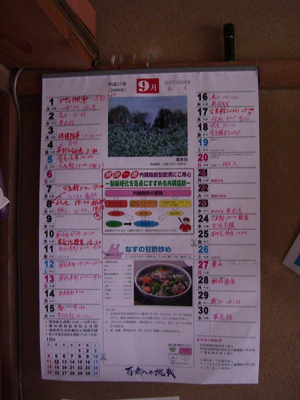
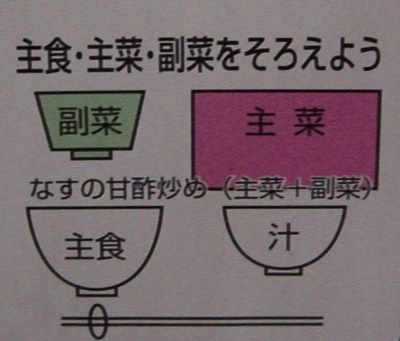
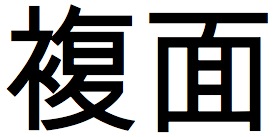
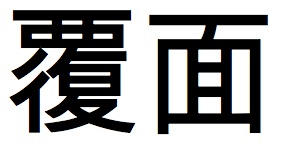 Booyah. As he noted, it means concealed or, in this case, unmarked. Thanks, Gulab. Sorry it took me so long to update this post!
Booyah. As he noted, it means concealed or, in this case, unmarked. Thanks, Gulab. Sorry it took me so long to update this post!
